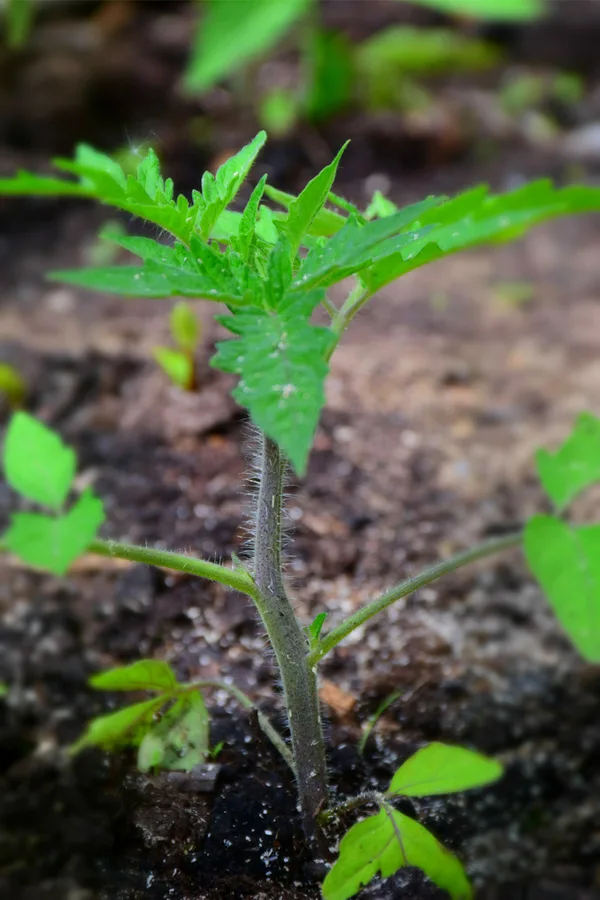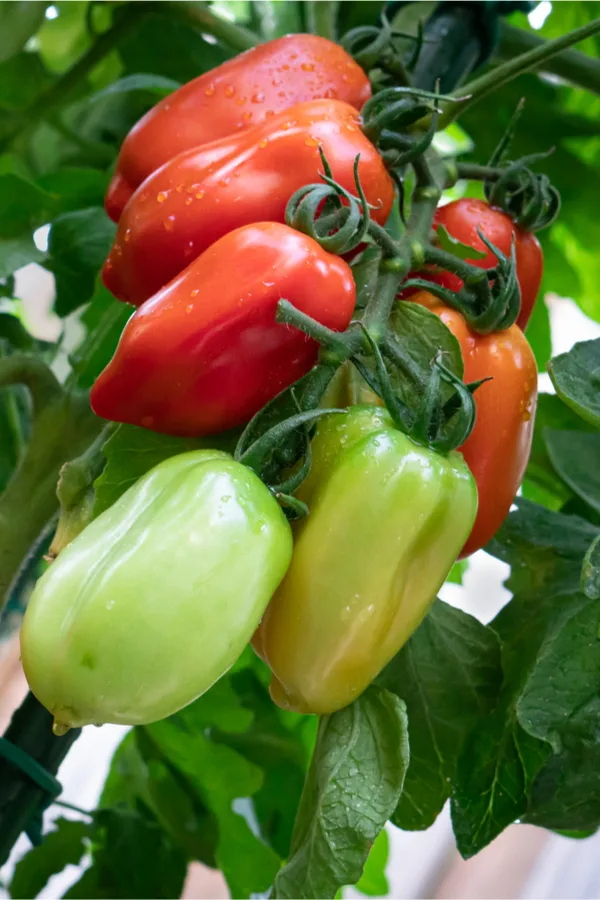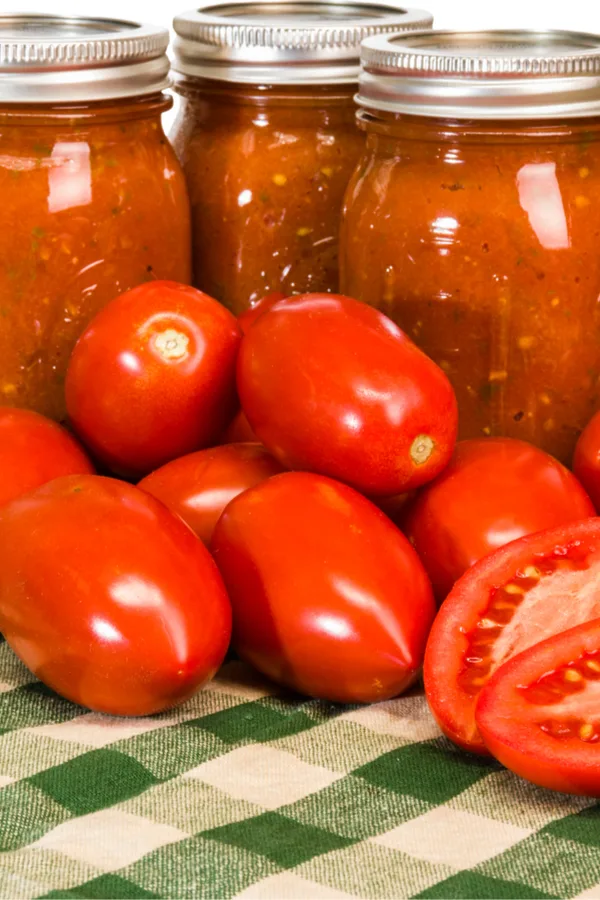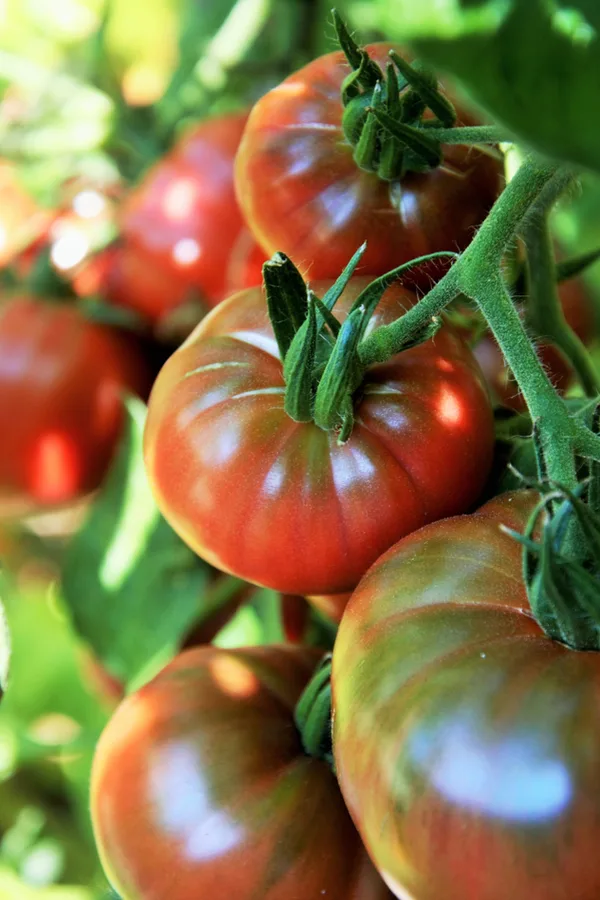There is certainly a lot of confusion when it comes to the subject of determinate and indeterminate tomatoes. Especially when it involves selecting which type is the best choice to grow.
The simple truth is that both varieties have a purpose and a place for growing in any setting. Whether that setting be in a garden, raised beds, or in pots and containers.
Hopefully, with today’s article, we can shed a little light on the determinate vs. indeterminate topic. And, in the process, help dispel much of the confusion that surrounds picking which of the two types is best for your particular growing situation.
We actually grow both styles of tomatoes on our little farm. And, as you will see below, we do so because each variety fills a different growing need. With that said let’s start by taking a look at what it means for a tomato to be determinate or indeterminate.

The Difference Between Determinate and Indeterminate Tomatoes
So just exactly what does it mean for a tomato to be determinate or indeterminate? Does it involve being a heirloom or a hybrid plant? Is one an easier plant to grow? Does one taste better than the other?
Actually, the difference between the two varieties of tomatoes has little to do with anything listed above. Instead, it actually involves how the tomato plant grows and matures. And even more, how and when it produces its fruit.
Here is a look at each specific type of tomato, along with a look at which variety might be the best choice for your growing needs.
Determinate Tomatoes – Indeterminate or Determinate Tomatoes
Determinate tomato plants are tomato varieties that grow and mature their crop during a set period of time. And once they have completed their cycle, they will not produce more blooms or fruit beyond that period of time.

Determinate tomato varieties tend to be bush-style plants. They often grow in the range of 3 to 4′ tall and maintain their shape. As such, they are easily managed in their space.
A great example of a determinate is the ever popular Roma tomato. The plum-style fruit is a favorite choice to grow for many gardeners because it is wonderful for making homemade salsa and sauce – and perfect for salads and fresh eating too.
The Roma tomato is a bush-style tomato plant that tops out at around 3′ in height. And because it is a determinate variety, it produces nearly all of it’s blooms over the course of a two to three week period. Likewise, it also ripens the majority of its fruit at the same time as well.
In fact, most Roma plants will ripen all of their fruit within a three to four weed period. Once that entire process occurs, the plants completes its growing cycle and begins to die off.
Are My Tomatoes Dying? Indeterminate or Determinate Tomatoes
This process sometimes catches novice gardeners off guard. As the indeterminate plant begins to die off, they begin to worry that the plant is becoming sick. After all, shouldn’t the plant continue producing all through summer? The fact is with determinate tomatoes, no matter what you do, or how you fertilize or water, the plant is going to die off once it produces its main crop.

You might ask why would someone want a tomato that only gives one large harvest? Well, there are actually several advantages to growing determinate tomato varieties.
For one, with their bush-style growth, they can fit in smaller spaces. They are perfect for container growing, and do equally well in raised beds and planter boxes too. But determinate tomato varieties also are a wonderful choice if canning and preserving are in your future.
That is because with a short but large harvest period, there are plenty of tomatoes to turn into anything you like. It can be difficult to find enough tomatoes to preserve a batch if your harvest is spread out all summer. But with determinate tomatoes, that is never an issue.
Indeterminate Tomatoes
Unlike determinate tomatoes, indeterminate varieties will continue to grow, bloom and produce new tomatoes all season. Well, that is, until the plant finally succumbs to a frost or freeze.
Indeterminate varieties, in general, tend to be larger, more expansive plants. Long-standing favorites like Brandywine, Purple Cherokee, and San Marzano are all indeterminate varieties. As such, as long as they stay healthy, they will continue to grow and produce all season long.

But, with that said, it is important to realize that the harvest for indeterminate tomatoes will not be massive at any specific time. In fact, it may be just a few tomatoes each day once the plant matures.
This makes them a wonderful choice for fresh eating of course, but can make it difficult to have enough to preserve if only growing a few plants.
Picking The Right Variety For Your Garden – Indeterminate or Determinate Tomatoes
So what is the best choice for your garden?
Selecting a determinate or indeterminate tomato really boils down to a few simple factors. First and foremost, you need to know what you want from your tomato plants. Are you planning on canning and preserving? Or do you simply want fresh tomatoes to enjoy all summer long? Maybe, as in the case for us, it’s a combination of the two.
You also need to take into consideration the space you have available to grow. Will you be planting in a large garden? In raised beds? Or maybe in pots and containers for a patio garden?
Listen In Below To Our Podcast On The Secrets To Growing The Best Tomatoes On The Block!
If you are planting in a large garden, the sky really is the limit. We plant both varieties in our Raised Row Garden to have plenty for canning and fresh eating. Growing both is actually a great idea for canners because you can mix your available indeterminate varieties when a large batch of your determinate tomatoes are ready.
Smaller spaces, of course, are better suited for determinate tomatoes due to their more compact growth. One final note, if you only plant determinate tomatoes but want to have tomatoes later in the season, stagger your planting. That way, as once plant fades, you will have another to bring on more.
Here is to picking the best tomato variety for your gardening needs this year! For more info on growing tomatoes, check out our article on How To Fertilize Tomatoes. Happy Gardening – Jim and Mary.
